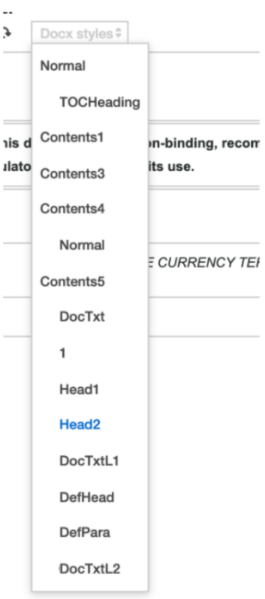House styles – why are they important in law, and how can LegalTech help?
(5 minute read)
Often companies have certain “house styles” to look and feel like their branding; you see it in their logos, communication materials, documents and more! But for in-house legal departments and law firms, how does this apply to the presentation of their contracts?
In this week’s blog post we will look at why legal departments (both in-house and law firms) have a house style and how they adhere to it across their precedents using LegalTech:
- What is a house style?
- Why are house styles important?
- How are house styles implemented? Without tech vs with tech
- House styles and document automation


1. What is a house style?
A house style is a standard set of formatting rules regarding the presentation of documents, including (but not limited to): font, font size, logo placement, numbering and list bullets, alignment indent, headers and footers, formatting such as bolding/italicising/underlining etc. House styles ensure your brand is at the forefront and remains consistent by standardising layouts.
For lawyers, drafting conventions can also encompass general rules on wording, such as:
- Notation of long dates – e.g. “within three business days” vs “within 3 business days”.
- Terminology – e.g. “Contract” vs “Agreement”.
- Expressions used – e.g. “as set out hereinabove” vs “as set out in this agreement”.
A firm’s house style can reflect its culture. For example, some will prefer traditional elements with a serif font (e.g. Times New Roman) and minimal branding, whilst others might include their logo and corporate colour palette for contemporaneity.
2. Why are house styles important?
Using house styles properly will ensure a standard method of presentation with a consistent look and feel across the contracts our clients interact with, supporting and strengthening your firm’s brand. Also, using house styles makes it easier to amend parts of the document.

Adhering to a uniform house style can contribute to an organisation’s reputation, just as a lack thereof can undermine it. Inconsistencies in formatting, syntax, or structure can implicate a lack of internal organisation or even a careless drafter. A robust set of styles is also vital for ensuring the numbering system (and corresponding cross-references) functions correctly for legal documents.
Lack of attention to detail is not what clients expect when paying premium hourly rates. For both law firms and in-house legal departments, there is a risk that poor document layout may undercut the gravitas of the drafted contract.
3. How are house styles implemented?
A) Without Tech: Companies usually have an internal policy guidance document for employees to refer to – setting out the house style rules that can range anywhere between 5 and 50 pages. In practice, human error can get in the way of perfectly formatting the document to make it house-style compliant when managing the layout manually.
B) With Tech: For many organisations striving to improve their service delivery and avoid the margin of error, they turn to legal technology to automate their house style rules. Advanced document assembly software eliminates the need to manage a house style when all contracts are generated using the tool. As a result, the user would not be able to change the layout (at least not unconsciously).

4. House styles and document automation
Automation is about doing tasks quicker and better. Automated contracts allow you to generate and draft contracts more rapidly and in a way that ensures perfection, every time.
As you can read in one of our previous blog posts, there are many reasons and potential benefits for law firms, in-house legal and commercial teams to implement document automation. However, a common “worry” of some clients when automating their documents is that their formatting and house styles will not be preserved. Also include this is understandable since some cloud solutions are not able to properly support house styles, but that with Avvoka that is not an issue because house styles are preserved.
Avvoka understands the importance of styles and is able to retain them accurately from Microsoft Word, including all the necessary features to implement a robust house style. Importing a .docx into Avvoka will retain the style’s name and associated properties relating to each paragraph. This helps to ensure that after you generate a document in Avvoka from an automated template, your downloaded .docx file looks and feels exactly like the original precedent you uploaded.

Furthermore, upon uploading the .docx to a template, Avvoka will store all xml metadata related to styles allowing the possibility of storing multiple house styles on the system. Each paragraph inside the Avvoka template will have a saved style name associated with it. When a user then downloads the .docx. from Avvoka, the system will match the saved styles from the initial upload, with each individual paragraph now contained in the document. It will be stored within a new tag in Avvoka called avv-docx-style.
If you’d like to see how Avvoka can consistently retain your house style, please get in touch!

Read more from Avvoka:
- How can a document automation API turbocharge your legal practice?
- Legal technology: how any lawyer can supercharge their practice
- Next generation of lawyers and the call for legal tech
- A Student’s Guide to LegalTech
- The power of no-code automation with Avvoka
By: Rebecca Preen
